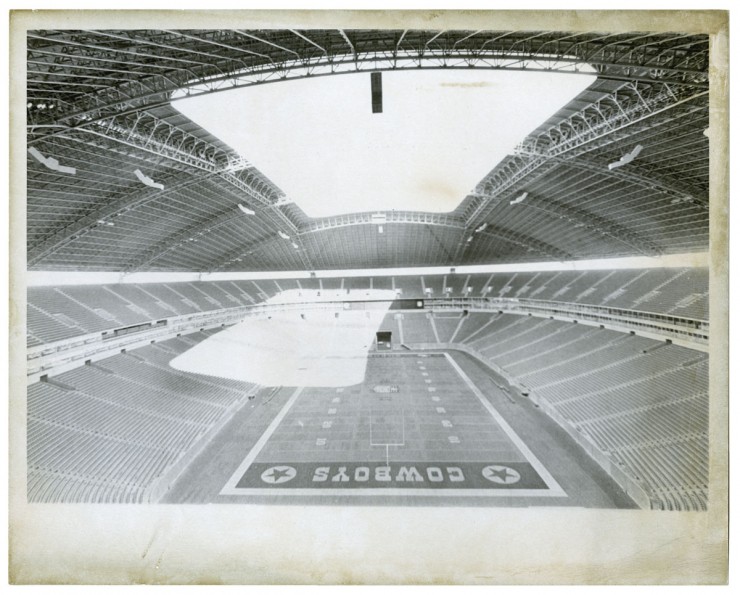
A view of the field and open roof at Texas Stadium in Irving, 1972. From the Lester Strother Texas Metro Collection. UNTA_AR0327-101-002.
Football is fun. It’s a moneymaker, too. That’s one reason Irving decided to construct Texas Stadium, after the owner of the Dallas Cowboys, Clint Murchison Jr., expressed interest in moving the team out of the Cotton Bowl. Through revenue bonds, Irving financed the stadium, and it opened in 1971 as the home of the Dallas Cowboys.
The stadium was state-of-the-art. There were seats for 65,675 fans, a stadium club, and 381 luxury suites were added in a later remodel. People were excited about the stadium, and Irving was proud of its new addition. The Cowboys were nicknamed “America’s team” for much of their time here, and the team became one of the NFL’s most valuable.
What people remember most about Texas Stadium is its partial roof. It was originally designed to be retractable, but it was discovered that the stadium couldn’t support that much weight. This resulted in a design where the fans were sheltered from the weather, but the players were not. Texas Stadium was the only open-roofed stadium in the NFL, and it certainly caused problems, such as when the field was covered in snow during the 1993 game between the Cowboys and Miami Dolphins.
The 2008 season was the Cowboys’ last at Texas Stadium. In 2009, they started calling Cowboy Stadium in Arlington home. Much of the installations and memorabilia were auctioned off after the final game. In 2010, Texas Stadium was demolished by a widely-televised controlled implosion.
-by Alexandra Traxinger Schütz



Leave a Reply